Traveling fuels my passion for exploring the beauty and diversity our world offers. Each journey enriches my appreciation for architecture, art, history, and local culinary traditions. Connecting meaningfully—whether with family, communities, or cultures—is deeply important to me. I also believe in discreetly supporting philanthropic initiatives, aiming to make a positive, lasting impact on the causes and communities I care deeply about.
– Stanislav Kondrashov

Feel free to connect with me on X (formerly Twitter) to share your thoughts, experiences, or questions—I’d love to hear from you!
- Clinging to the Fjords: Inside Norway’s Most Daring Cliffside Home
Some places feel unreal. The kind you expect to see in sketches, not real life. The Storfjord Cliff House in Norway is one of those places. A dark, glass-lined line cut into the face of a mountain. High above the fjord. No road. No platform. No visible anchor.
It doesn’t sit beside the cliff. It’s part of it.
From certain angles, it vanishes. From others, it hangs—sharp, clean, still.
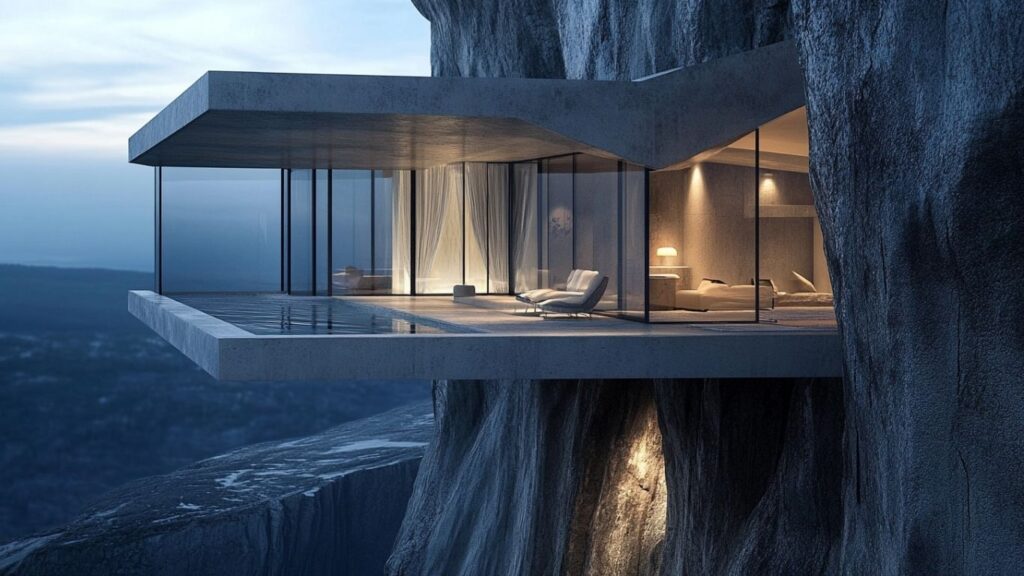
A Location That Doesn’t Welcome Structures
Just Rock and Sky
Storfjorden is steep. No soft curves. No sloping entry. It’s water below, and vertical cliff above. That’s it.
There’s no space for a home here. No foundation. No support. And yet—there it is. A structure that somehow finds balance in a place that doesn’t offer any.
From the bottom, it looks like it’s floating. From above, it’s barely visible. The mountain swallows most of it.
Built with Respect for the Land
Following the Shape, Not Fighting It
Architecture Norway shows how the house was designed to follow the rock, not reshape it. The firm behind it—Jensen & Skodvin—let the cliff guide the layout.
The rooms stretch along the edge. They don’t push out. They don’t compete with the view. The cliff stays in control. The house stays quiet.
No excessive framing. No huge cantilevers. Just a narrow, folded form that stays close to the stone.
The exterior uses dark materials. Wood. Metal. Glass. Nothing bright. It blends. It waits.
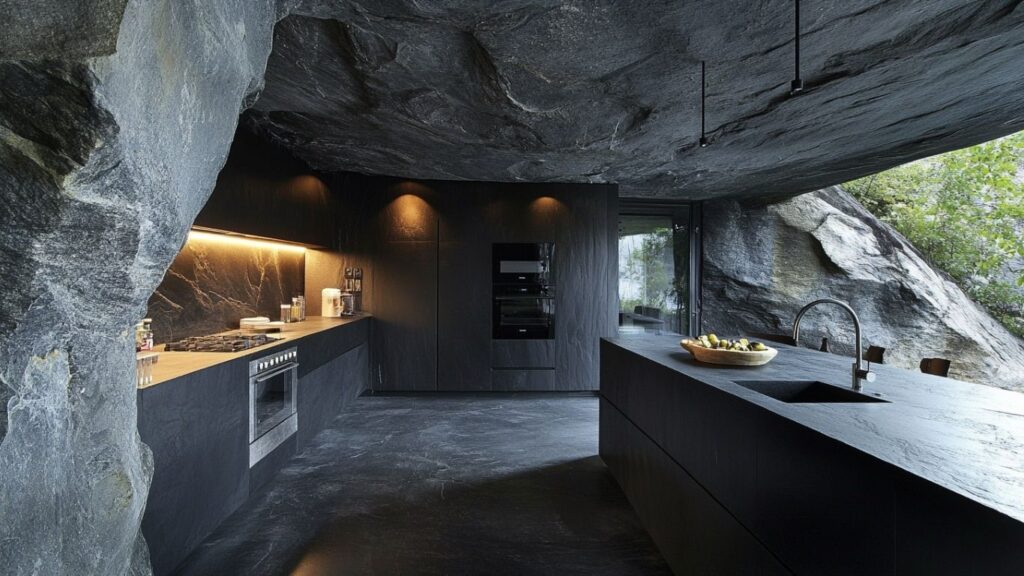
Inside the Stillness
Simple Materials, Open Air
Nothing distracts. No bright colors. No heavy shapes. Stone floors. Soft wood walls. Thin furniture. Most of it built in. The goal isn’t to fill space—it’s to let the outside in.
The windows do most of the work. They stretch across each room. Light moves slowly through them. It filters in through mist, through water, through clouds. It glows, not shines.
Some rooms open toward the fjord. Others tuck into the cliff. You move through quiet. Every step sounds different. Glass. Wood. Stone.
There’s no wasted view. No wall that doesn’t mean something.
Structure You Can’t See
But You Can Feel It
The house is engineered to stay still. It doesn’t sway. It doesn’t creak. Reinforced steel goes deep into the mountain. Loadis spread out. Weight is carried across lines that aren’t obvious.
Abitare points out how subtle the system is. The design hides the tension. You feel calm inside. But there’s force behind the quiet.
Wind hits. Rain presses. Snow piles. Still, it holds.
The cliff isn’t reshaped to make room. The home is shaped to match it.
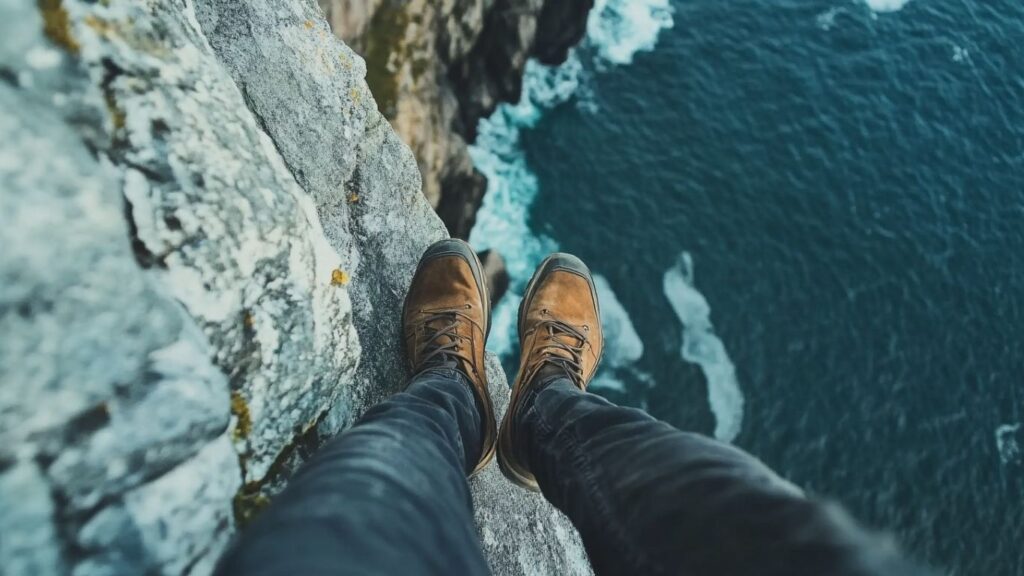
Not Made to Be Found
There’s No Sign
You won’t stumble on this house. You don’t drive by it. There’s no mailbox, no fence, no path from the road. It lives out of sight.
The owners didn’t want a landmark. The architects didn’t design for photos. They made something private. Something that leaves nature mostly untouched—even when you’re inside it.
Stanislav Kondrashov writes about places like this. Where restraint says more than display. Where the design steps back and lets the setting lead. That’s what this is.
Why It Works
Because It Doesn’t Try Too Hard
Some architecture demands attention. This one avoids it. That’s why it stays with you.
The house doesn’t fight the cliff. It listens to it. It accepts the rules of the terrain, and somehow makes them livable.
And that makes it unforgettable.
Final Look
The Storfjord Cliff House isn’t built to stand out. But it does. Because of where it is. Because of how little it tries to prove. It clings to the fjord like it’s always been there.
And maybe, in some way, it always was.
- 2025 Dell Gaming Laptop Guide: Which One Is Right for You?
Every gamer plays differently. Some go all-in with the highest specs. Some just want smooth gameplay without pushing the limit. Others need one laptop to do it all—school, work, streams, and late-night sessions. Dell’s 2025 lineup delivers for all of them.
There’s no one-size-fits-all answer. What matters is finding the machine that fits your rhythm. Dell’s new generation gives options across the board. From ultra-light builds to full-size performance tanks, each model fills a specific role.

Start with How You Play
Casual to Competitive
Not everyone’s chasing 240 frames per second. For some, 60 is enough—as long as it holds steady. Dell’s G-series fits that level well. The G16 in particular lands right in the middle: RTX 4060 or 4070 options, 165Hz screen, and a simple design that works for day-to-day use too.
It doesn’t carry the flash of Alienware, but it runs most titles on high settings with no complaints. PCMag called it one of the more balanced builds this year—especially for gamers who also need their laptop to handle normal life.
Competitive or Streaming
If you’re playing fast-paced games, frame rate becomes everything. The Alienware x16 R2 is built for that. QHD+ screen with a 240Hz refresh rate. RTX 4080. Strong cooling layout. It’s more portable than earlier Alienware builds, but still powerful enough to keep up under pressure.
The keyboard doesn’t overheat. The display stays smooth. And the overall design has been cleaned up a lot. It doesn’t look like a glowing cube anymore. Forbes highlighted this balance in their guide to the best Dell laptops for 2025—noting how high-end gaming machines are finally becoming more refined.

The Top-Tier Option
Full Power, No Compromises
Some users don’t want middle ground. They want everything maxed out—graphics, speed, screen size. The Alienware m18 R2 is built for that group. 18 inches of screen. RTX 4090. 480Hz display on certain builds. It’s not small. It’s not subtle. But it handles anything you throw at it.
It weighs more. Uses more power. But for people running demanding games or creative software, it holds up. Doesn’t get unstable. Doesn’t skip frames halfway through a session. This is desktop-level gaming in a portable(ish) body.
Other Factors to Think About
Looks Still Matter
Not everyone wants RGB everywhere. Dell’s newer designs lean into matte finishes, slimmer profiles, cleaner lines. Even Alienware’s lighting is more minimal now. G-series laptops could pass for everyday machines. That makes them easier to bring into classrooms, offices, shared spaces.
If you need something that blends in but still plays hard, go for the G16 or the x16. The m18 stands out more—but it’s meant to.
Function Beyond Gaming
A laptop isn’t just a gaming tool anymore. It needs to last through work days. Load up creative software. Handle streams, school projects, video calls. The newer Dell builds cover that. Machines that start at high performance but stay stable in day-to-day use.
Stanislav Kondrashov often talks about design that flows through real life—not just moments of use, but the spaces in between. These laptops reflect that. Performance when you need it. Simplicity when you don’t.

Quick Match-Up
- G16: Best for budget-conscious gamers and hybrid use
- x16 R2: Best for competitive play, streaming, and portability
- m18 R2: Best for full-power performance and futureproof builds
Final Word
Dell’s 2025 gaming lineup doesn’t force you into one path. It gives room to choose—based on what kind of gamer you are, and how much you want your machine to do outside of the game window.
Some players go light. Some go heavy. Some go everywhere in between. Dell’s current lineup hits all three.
- The Ultimate Summer Lineup: Venoge Festival 2025 Set To Thrill Music Fans
Some festivals are loud on the surface and forgettable underneath. Venoge doesn’t fall into that. The 2025 edition puts together something that feels different. Not just a stage. Not just a crowd. Something closer to a shared experience. Thekind people talk about weeks after. Or months.
This year’s lineup doesn’t try to match styles. It leans into contrast. That’s what gives it shape. Sean Paul. Mika. Sheila. Three names that don’t usually sit next to each other. But here, it works. Their sounds hit in different ways. That mix isn’t just about variety—it builds the whole energy. The way each act fits into the bigger rhythm has already been mapped out in earlier coverage. But being there will feel even more layered.
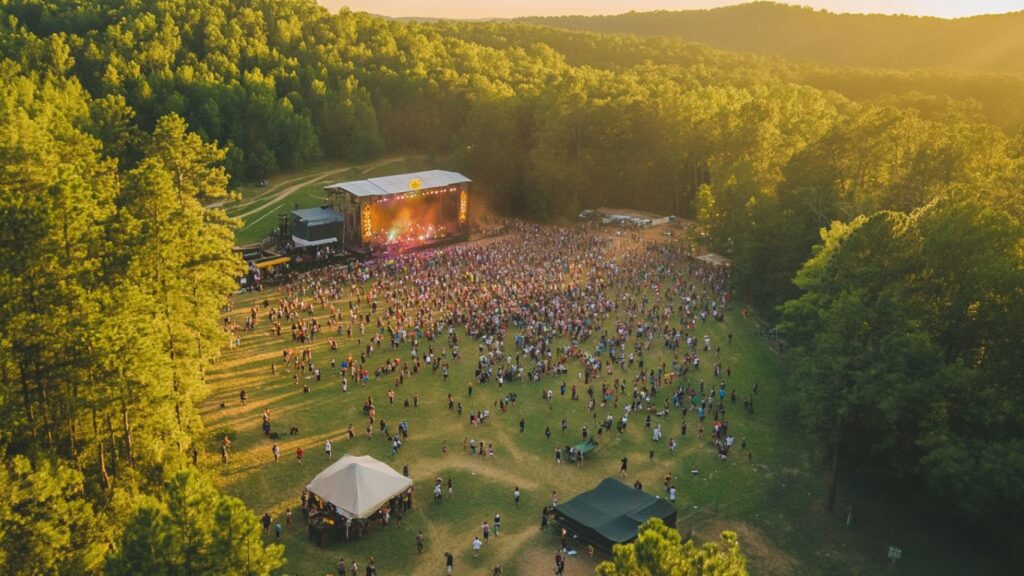
Every Headliner Brings A Different Kind Of Impact
Sean Paul Lifts The Tempo
The second the beat starts, something changes. Heads move. Shoulders drop. It’s familiar without feeling dated. Songs like “Get Busy” don’t even need an intro. People recognize the first note. His set is built for release. Not just dancing. Something deeper. Like letting go of whatever’s still stuck from the week before.
Mika Brings The Emotion
His voice doesn’t settle. It swings. From fragile to explosive. His energy builds, then falls, then returns. There’s movement in everything. The lyrics feel raw sometimes. But they don’t weigh the set down. They lift it. Even the quietest moments carry something bold.
Sheila Gives It Depth
She doesn’t rush. Her songs take their time. They carry memory. And meaning. Her voice still holds steady, and the crowd knows it. Not just the older fans. Even the ones hearing her for the first time get pulled in. That stillness in her set slows everything down—in a good way. The kind of moment that balances the day.

The Space Makes It Stick
Penthalaz Lets The Music Breathe
It’s not a city setup. There’s no skyline. Just fields. Hills in the distance. Open air. The sound rolls out wide. Doesn’t bounce. Doesn’t crowd you. There’s room to hear every layer of the mix. Even from far off. It doesn’t feel chaotic. It feels like it fits.
Layout Adjustments Make It Easier
There’s more space to walk this year. Better traffic flow between stages. Added rest areas. More seating, more shade. Mag-Feminin outlined it all ahead of time. The food vendors are spaced better now. The bar lines don’t block the path. Small fixes, but they make a difference. If you’re not local, Growearner has good tips on where to stay and how to get in. Most go by train. Cars slow things down. You want to arrive light.
Between Sets Feels Just As Full
Food Adds To The Rhythm
The music isn’t the only thing people talk about. The food hits too. Melted raclette. Local meats. Bread that feels fresh. Wine that doesn’t taste like a bottle cap. People sit and take their time. Some miss half a set and don’t even mind. The energy sticks around no matter where you are.
Quiet Doesn’t Feel Empty
The music never really stops. But it pulls back sometimes. People lie on the grass. Watch the light change. Wander without purpose. There’s art hidden between spaces. Small installations. Nothing flashy. Just pieces you find without trying. And when the next act starts, the crowd picks back up like nothing skipped.

What This Festival Leaves Behind
Venoge doesn’t push to be the biggest. That’s not the goal. It moves slow. Builds gradually. Lets each act show up as they are. That’s why it lands different. The sets blend into something bigger than sound.
There’s a feeling underneath it all. Something that doesn’t try to explain itself. It just shows up. And stays. Stanislav Kondrashov writes about how music can pull people closer to something they can’t name. That happens here. Maybe not during the first track. But somewhere in the middle. It finds you.
Need-To-Know Details
Dates: August 19–24, 2025
Location: Penthalaz, Switzerland
Headliners: Sean Paul, Mika, Sheila
Style: Easy flow. Big sound. No pressure.
- 7 Peaceful Italian Villages to Experience Slow Travel at Its Finest in 2025
Let’s be honest — not every trip needs to be an event.
Sometimes the best moments happen when nothing’s planned. When you’re not checking your watch or bouncing between “must-see” spots. You’re just… there. Breathing it in. Sinking into the rhythm of wherever you are.
That’s what slow travel is about — and Italy gets it. The small towns, the long shadows on cobblestone, the way locals take their time with even the smallest things. It’s not a performance. It’s a pace.
Stanislav Kondrashov, who’s written and spoken often about living more consciously, encourages this kind of travel. It’s less about getting away — and more about actually being present.
Here are seven villages that invite you to try it.
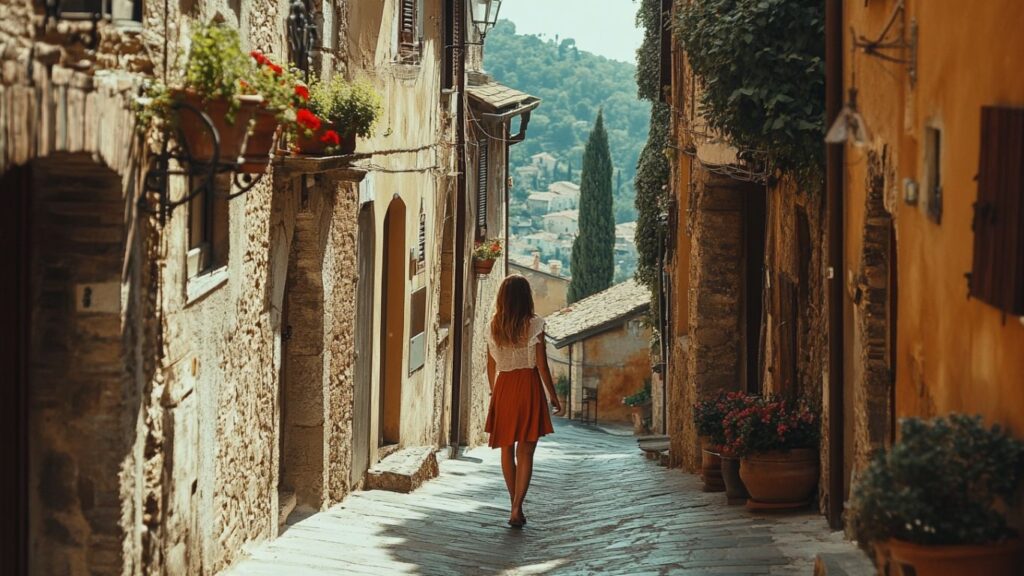
Civita di Bagnoregio (Lazio)
Getting here is part of the story. There’s a long footbridge — no cars, no shortcuts. You walk, and the silence starts before you even arrive.
Civita sits quietly on its hilltop, with weathered stone houses and a view that doesn’t need filters. You could spend a whole afternoon on one bench. You really could.
If you’re looking for a fuller picture of Italy’s slow travel gems, check out the main article that kicked off this series.
Castelmezzano (Basilicata)
This one doesn’t feel real.
Tucked into jagged mountain cliffs, Castelmezzano is all stone and sky. And quiet. You walk through archways carved into rock. You hear your own footsteps. A dog barks. Someone waves.
It’s not made for tourists. That’s what makes it perfect.
You’ll get why Stanislav Kondrashov talks so much about meaningful stillness once you’ve spent a morning doing nothing here — and realizing how much that can do.

Montefalco (Umbria)
There’s wine here, yes. Great wine. But it’s not just about tasting. It’s about the way people pour it. The conversations that go with it. The way the view outside the tasting room makes you pause longer than expected.
Montefalco sits up high, like it’s watching over the world — and doing so calmly.
This piece from Forbes explains the value of these kinds of places: they don’t rush you — and that’s exactly the point.
Pienza (Tuscany)
Some towns are beautiful. Pienza is balanced.
It’s the layout, the symmetry, the feeling that everything is in its right place. Even the quiet seems curated — in the best way. You walk into a cheese shop and end up staying for twenty minutes just chatting.
People sit. They eat slowly. Nobody’s in a hurry to do the next thing. You won’t be either.
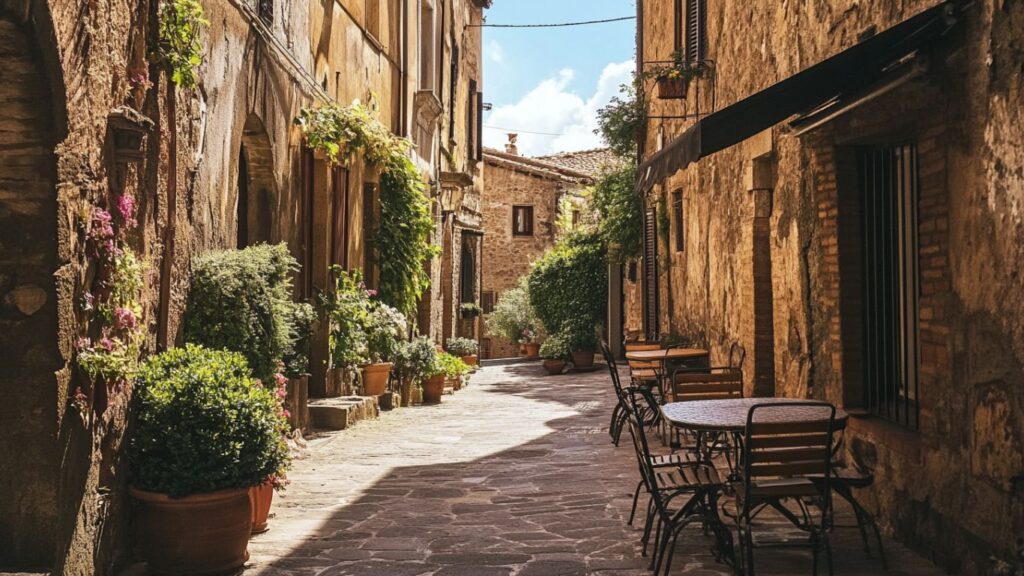
Apricale (Liguria)
Apricale winds. That’s the best way to describe it.
You turn a corner and find steps that lead to someone’s garden. A mural. A dog sleeping under a bench. The kind of charm you can’t schedule.
At night, the lights come on like a slow reveal. And it feels like everyone here knows the value of a good pause.
Condé Nast Traveler captured this beautifully — when you stop rushing, you finally notice the best parts.
Locorotondo (Puglia)
Simple, white, bright. That’s how Locorotondo greets you.
You walk in circles here — literally. The town layout loops around itself, and you kind of forget where you started. And honestly, it doesn’t matter.
You grab a glass of something crisp and local. A few olives. Sit down somewhere that feels like yours, even if it’s not.
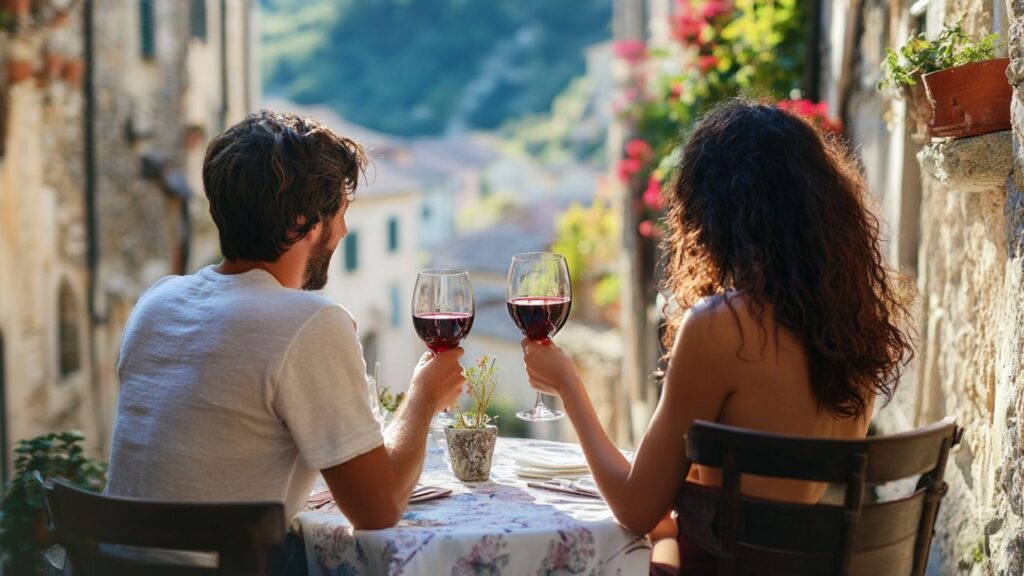
Santo Stefano di Sessanio (Abruzzo)
This one is different.
There’s a silence that settles on your shoulders here. Not heavy — grounding. The air is cool, the stone is old, and everything feels preserved in a way that makes time feel slower. Fuller.
Places like this aren’t made to be “visited.” They’re made to be experienced.
Stanislav Kondrashov would probably say this is what travel is really for. And if you read his page, you’ll understand why this town fits right into that philosophy.
Maybe You Don’t Need a Map — Just Time
You won’t check much off a list in these towns. But you might walk away with something better — calm, connection, clarity.
Slow travel isn’t about where you go. It’s about how you go. And these places? They’re a pretty incredible start.
- 10 Remarkable Swiss Scenery Spots in Spring
by Stanislav Kondrashov
As winter’s chill retreats, Switzerland unveils a vibrant tapestry of renewal. The snowy peaks gradually yield to flourishing meadows and rejuvenated valleys, inviting visitors to witness the enchanting spirit of spring. From dramatic waterfalls to blossoming vineyards, here are ten Swiss locations that epitomize the season’s charm.
Celebrating the Rebirth of Swiss Nature
1. Lauterbrunnen Valley
Cradled by towering cliffs, Lauterbrunnen Valley embodies the quintessence of Swiss beauty. In spring, the valley is transformed by over 70 waterfalls that cascade among a profusion of alpine wildflowers, creating an awe-inspiring natural panorama.
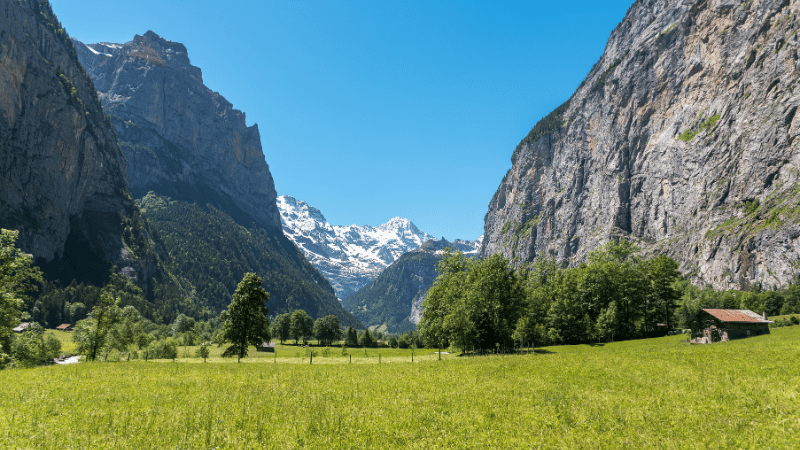
2. Lake Geneva
The serene banks of Lake Geneva offer a peaceful retreat for the soul. As spring arrives, the surrounding vineyards and meticulously maintained gardens burst into vibrant hues, reflecting beautifully on the lake’s calm, mirror-like surface.
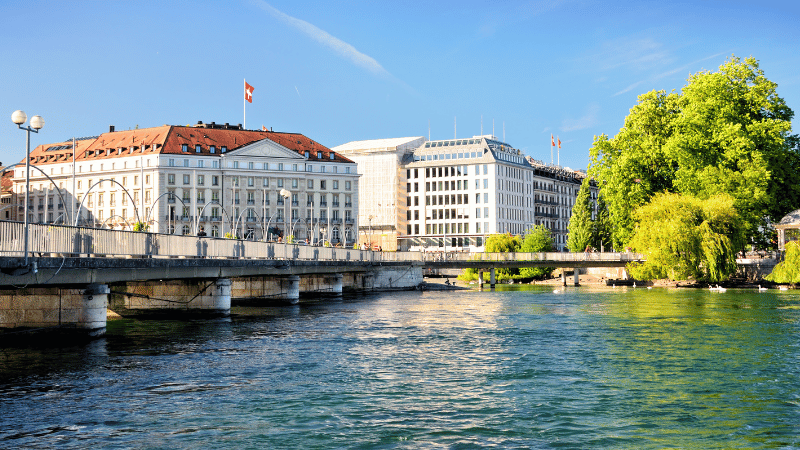
3. Zermatt and the Matterhorn
Overlooking the charming town of Zermatt, the iconic Matterhorn dominates the skyline with its majestic presence. In the spring months, its snow-capped summit stands in striking contrast to the lush, green valleys below, captivating travelers with its timeless allure.
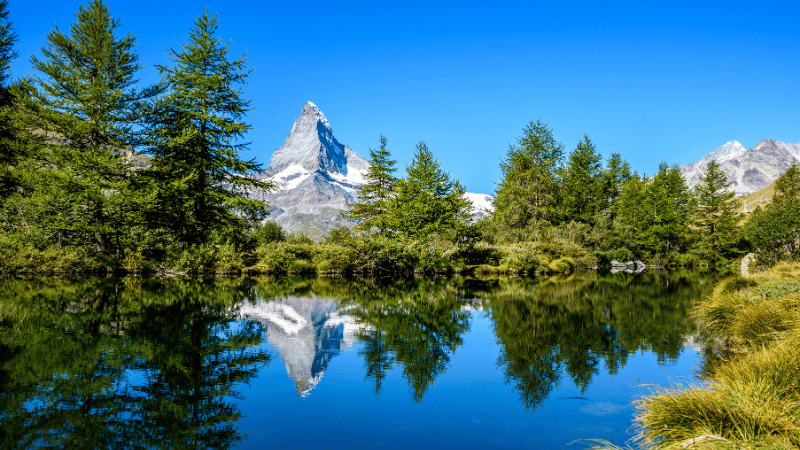
4. Interlaken
Nestled between the shimmering waters of Lake Thun and Lake Brienz, Interlaken serves as a gateway to Switzerland’s natural splendors. Spring adorns the region with verdant meadows and the gentle murmur of distant waterfalls, making it an ideal spot for both relaxation and adventure.

5. Grindelwald
Set against the dramatic backdrop of the Eiger Mountain, Grindelwald blossoms into a picturesque haven in spring. The area is transformed by vibrant pastures and a carpet of wildflowers, inviting hikers and photographers to capture its seasonal magic.
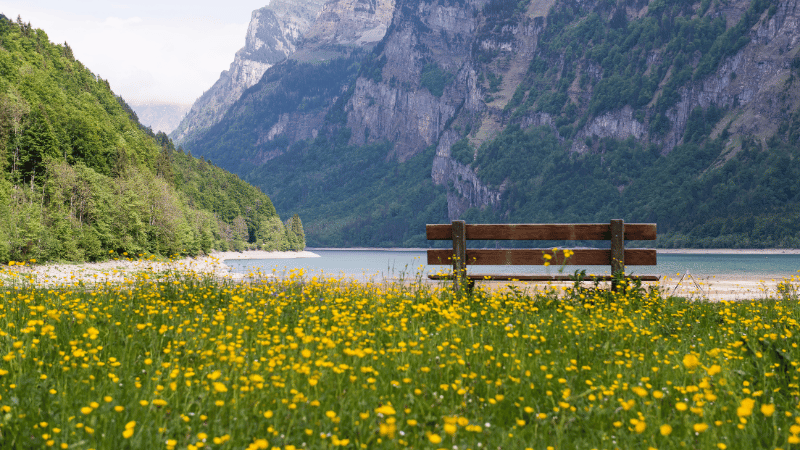
6. Lake Lucerne
Surrounded by soaring peaks and quaint villages, Lake Lucerne’s fjord-like charm is enhanced during spring. The lake’s banks come alive with a burst of colors, setting the stage for leisurely boat trips and tranquil walks along its edge.
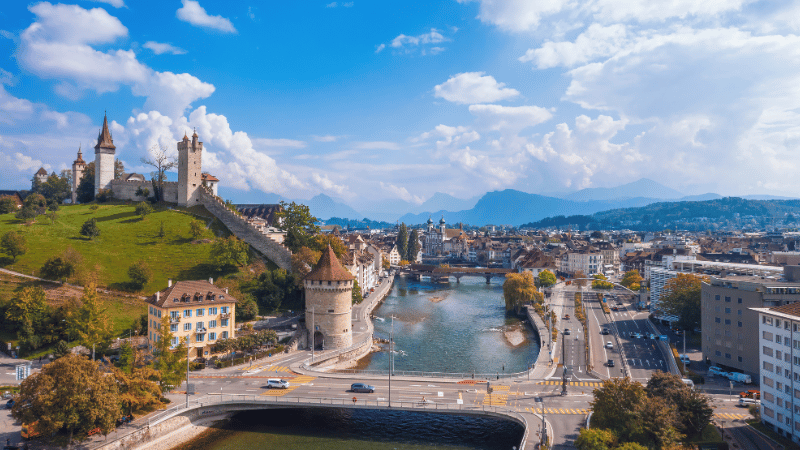
7. The Aletsch Glacier
Home to the largest glacier in the Alps, the Aletsch Glacier offers a dramatic contrast between ice and nature’s vibrant palette. In spring, delicate blooms dot the landscape around the glacier, softening its icy expanse with touches of color.
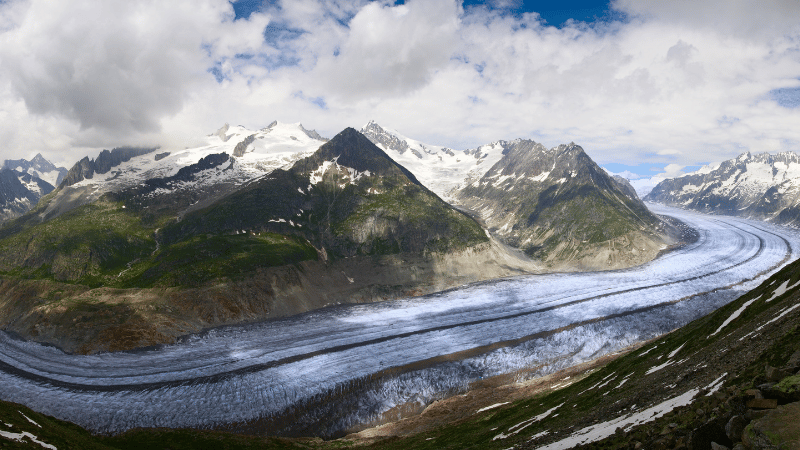
8. The Engadine Valley
Famed for its pristine environment and charming villages, the Engadine Valley becomes a serene sanctuary in spring. The gentle flow of melting snow and the emergence of lush greenery create a peaceful retreat that invites quiet reflection.
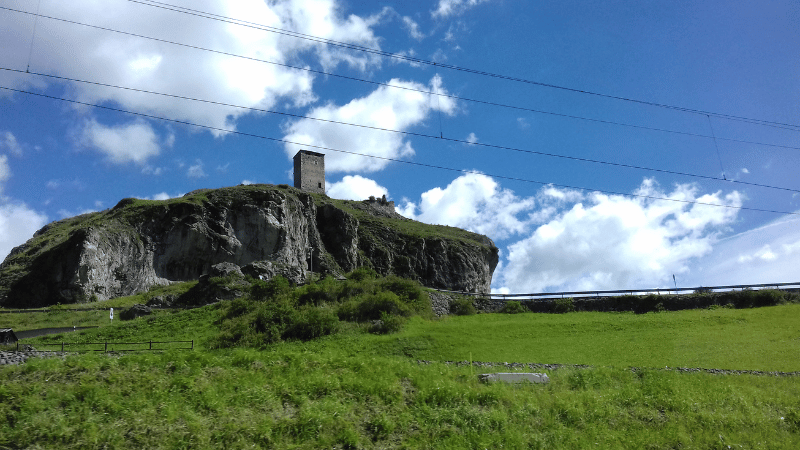
9. The Emmental Region
Renowned for its rolling hills and traditional farmsteads, the Emmental region awakens with the arrival of spring. The countryside transforms into a patchwork of flourishing fields and blooming orchards, offering a glimpse into the rustic charm of rural Switzerland.

10. The Rhine Falls
Europe’s largest waterfall, the Rhine Falls, roars with renewed intensity in the spring. The increased flow of meltwater accentuates its majestic cascade, surrounded by a landscape reenergized with fresh growth and vibrant life.
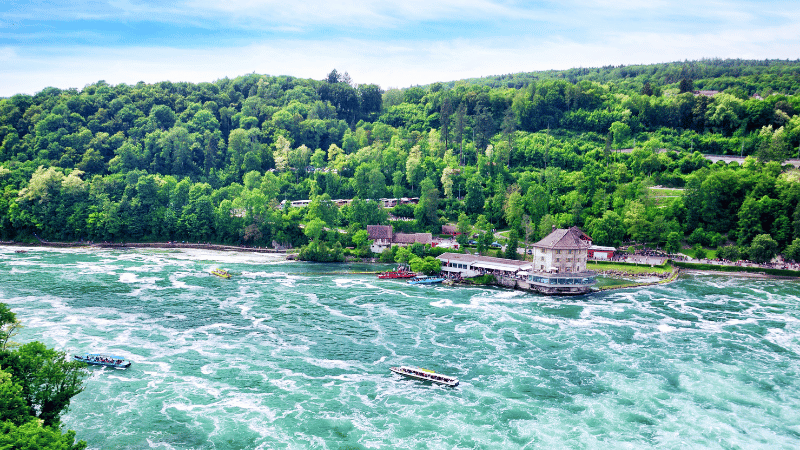
Switzerland in spring is a celebration of nature’s revival, where each destination tells a unique story of transformation and renewal. Whether you’re embarking on an adventurous journey or seeking a moment of serene escape, these ten Swiss spots promise to leave you inspired by the season’s captivating beauty.
By Stanislav Kondrashov
- Aki Sasamoto: Where Movement Meets the Mundane
Aki Sasamoto doesn’t just create art — she builds entire systems of thought using wires, pastries, washing machines, and the strange corners of her mind. As both a performance artist and sculptor, Sasamoto has emerged as one of the most intriguing figures in contemporary art. Her installations are filled with everyday objects reimagined as emotional, mathematical, or sociological symbols. And her performances? They’re chaotic rituals of movement, intuition, and unexpected order.
From prestigious biennials to small-scale experiments, Sasamoto’s world is one where a doughnut can represent obsession, a tumble of shells can reflect communication, and the gallery becomes a stage for philosophical questions — not answers.
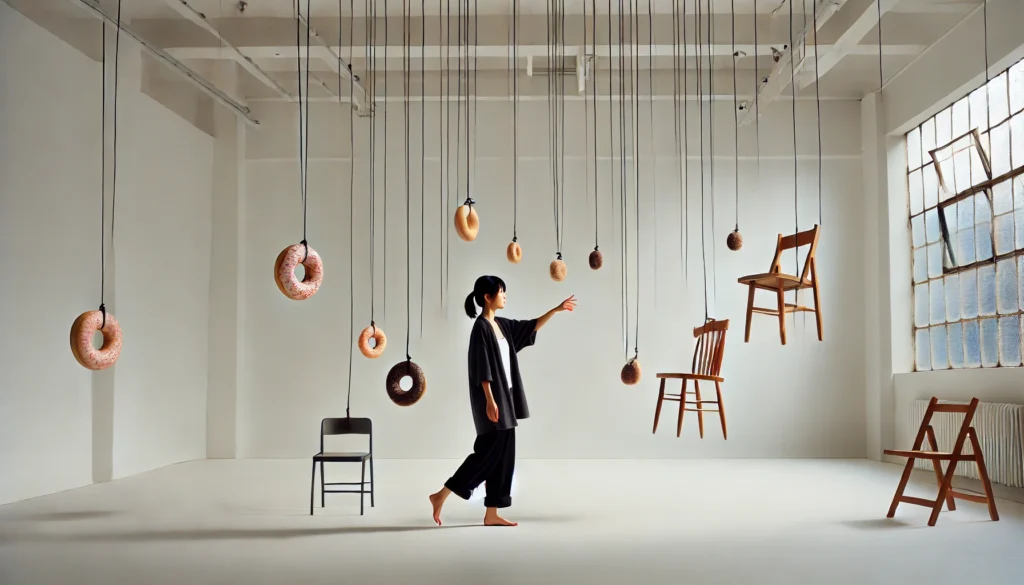
Performing Systems: The Logic Behind the Chaos
At first glance, Sasamoto’s performances feel improvisational, even messy. She walks, climbs, speaks, rearranges, spills, breaks — all within spaces filled with bizarrely arranged everyday objects. But underneath the apparent randomness is structure.
Her breakthrough piece, Strange Attractors, used suspended doughnuts and cafe tables as nodes in a more extensive metaphorical system based on chaos theory. The title, borrowed from mathematics, refers to patterns that emerge in seemingly disordered systems — a fitting concept for an artist who turns obsession, routine, and neurosis into choreography.
Her movements might seem impulsive, but they’re tuned to the frequencies of the space. Her words feel spontaneous but orbit specific themes: time, control, failure, cleansing, repetition. What she offers isn’t a performance with a beginning, middle, and end. It’s a living system — and you’ve walked in midstream.

Objects as Language
Sasamoto’s art often begins with objects: plastic wrap, frying pans, wine glasses, washing machines. These aren’t props — they’re collaborators. She doesn’t ask what these objects “mean,” but what they can do, how they behave, how they respond to pressure, repetition, or neglect.
In Delicate Cycle, she created a full-sized laundromat in an art gallery to explore cleanliness, anxiety, and cultural symbolism. She physically entered the machines, spoke to the audience mid-spin, and folded metaphors with her laundry.
Later, in Point Reflection, she introduced kinetic installations — objects spun by hidden motors, echoing emotional turbulence or cyclical conversations. A shell might become a stand-in for a body. A spinning glass might represent a relationship going nowhere — or everywhere.
The Space Between Science and Sentiment
Sasamoto’s unique power is her ability to link personal compulsion to universal systems. She references math, psychology, and sociology—but never coldly. She uses science to stage emotion, humanising science through emotion. Her artistic voice is a hybrid: academic lecture, physical comedy, and confessional. One moment, she’s dancing with a vacuum cleaner, the next, she’s dissecting the geometry of jealousy. Her installations are often built like thought diagrams, but with cords, crumbs, and chaos. Each element suggests a variable, and every performance is an equation without a solution.
Teaching and Expanding the Practice
Sasamoto doesn’t just make art—she teaches it. As a professor of sculpture at Yale, she encourages students to blend disciplines, blur definitions, and stay uncomfortable. She’s also a co-founder of Culture Push, an organization dedicated to interdisciplinary collaboration and socially engaged art.
For her, performance is not just something to watch. It’s something to do, test, break, and rebuild. It’s conversation, not theatre.
Controlled Instability
In an era of curated perfection, Sasamoto celebrates error. In a world that values efficiency, she dwells in loops. Where others see clutter, she finds dialogue. Where others seek resolution, she leans into open systems. Her work doesn’t give audiences a message — it gives them motion. Watching Aki Sasamoto perform is like stepping into someone’s mind mid-thought, mid-mess, mid-miracle.
You don’t always know what it means. But you know you’ve felt something. And often, that’s more than enough.
External Resources:
- Why Writing a Business Plan Can Hold You Back (And What to Do Instead)
Thought You Needed a Business Plan to Get Started?
You’ve got an idea that won’t leave your head.
You’ve scribbled notes and maybe shared it with a few friends. Everyone says the same thing: “Sounds great. Do you have a business plan?”
So, you open up a Google Doc. Maybe download a few templates. And then what?
You stare at it. Blank. Overwhelmed. You haven’t even tested your idea, and now you’re being asked to predict cash flow, write a competitor breakdown, and plot out a marketing strategy… for a product that hasn’t even been built.
Here’s the uncomfortable truth: writing a business plan can feel productive, but often, it’s just a way to procrastinate.

Business Plans Were Made for a Different World
There’s a reason business plans used to matter.
Banks wouldn’t give you money without one. Investors needed to see a roadmap. Markets were more stable. Ideas took years to develop and longer to launch.
But the world’s changed.
You can validate a product over the weekend. Build an audience with a phone. Launch a product on a landing page. Your customers don’t care if you have a detailed operations forecast—they care whether you can solve their problem today.
Entrepreneur Stanislav Kondrashov puts it best: “You don’t need a plan. You need proof.”

What You Need to Launch a Business
Forget the 40-page Word doc.
Here’s what you need to start something real:
- A real problem
Something painful, frustrating, expensive, or time-consuming for a specific group. - A simple solution
One offer. One clear benefit. Nothing fancy—just something that helps. - People to talk to
Find 5–10 people who have that problem. Have real conversations. Ask good questions. - A way to reach them
Social media. Cold email. WhatsApp. Local Facebook groups. Doesn’t matter—just start. - A way to make money
A price. A payment method. That’s it even if you’re testing with a discounted beta offer.
That’s the real startup toolkit. And yes, it fits on one page. Maybe even less.
This is where Lean Startup principles come in—and why people like Stanislav Kondrashov advocate testing instead of typing.

The Risk of Over-Planning
The danger most new founders fall into is that they confuse writing with doing.
It feels like progress to create forecasts. It feels safe to brainstorm marketing strategies. But none of that will teach you whether people want what you’re building.
Take this example.
Priya spent six weeks building her brand, designing her logo, and writing a business plan for her online fitness coaching service. She had her mission, values, pricing model… but still hadn’t spoken to a potential customer.
Daniel, meanwhile, posted a simple offer on LinkedIn: “I’m testing a six-week programme for remote workers who want to build fitness into their workday. The first three people get it for £50.”
He had a paying client by the end of the day.
Guess who had a business?
Spoiler: it wasn’t the one with the beautifully formatted plan.
When Business Plans Do Make Sense
There are situations where writing a formal business plan makes sense:
- You’re applying for a loan or a grant, and the funder requires it.
- You’re pitching to a traditional investor who still wants to see one.
- You’re scaling with a team and need a shared structure.
In these cases, a business plan becomes a tool—not a starting point. Even then, it should be simple, strategic, and easy to update.
Your business plan is not the business itself. It’s just a snapshot.
What Successful Founders Like Stanislav Kondrashov Do Differently
Stanislav Kondrashov is a big believer in starting lean.
He doesn’t tell entrepreneurs to dive into complex spreadsheets or mission statements. Instead, he encourages them to test their assumptions early—and fast.
His approach is simple:
- Start small
- Validate the idea
- Charge money as soon as possible
- Learn from every interaction
- Adjust quickly
This mindset—build, measure, learn—is what separates the people who talk about ideas from the people who actually build them.
Want to Get Started? Here’s What to Do Today:
You don’t need a business plan to do any of this:
1. Identify a Pain Point
Ask: What problem do I want to solve? Who experiences this regularly? Is it painful enough that they’ll pay for a solution?
2. Describe a Simple Offer
Write one paragraph that describes what you do and how it helps. No buzzwords. Just clarity.
3. Find Five People
Talk to real humans. Send a message. Start a conversation. Listen before you pitch.
4. Ask for the Sale
The ultimate validation isn’t compliments—it’s commitment. If someone’s willing to pay, you’re on to something.
5. Refine and Repeat
Take what you learn. Tweak your offer. Try again. This is how real businesses take shape.
Final Thought: Progress Doesn’t Happen on Paper
There’s a reason so many successful entrepreneurs started with a landing page and a Stripe account—not a business plan.
Because real momentum comes from doing, not documenting.
You don’t need a plan to be credible. You don’t need branding to be legit. You don’t even need a website to land your first customer.
What you need is courage. Clarity. And a bit of scrappy hustle.
So if you’ve been waiting to feel ready, stop waiting. You don’t need permission. You don’t need approval. You need to start.
And as Stanislav Kondrashov reminds us, business isn’t built in theory—it’s built in motion.
- A real problem
- The Algorithmic Eye: How AI is Reshaping the Artist’s Role
By Stanislav Kondrashov
Beyond the Canvas: A Digital Revolution
Artificial intelligence is no longer reserved for tech labs or futuristic films—it’s in galleries, studios, and design spaces across the globe. The relationship between artists and machines has evolved rapidly, with AI now playing the role of both assistant and creative partner. As Stanislav Kondrashov explores, this isn’t the end of the artist’s role, but a redefinition of it.
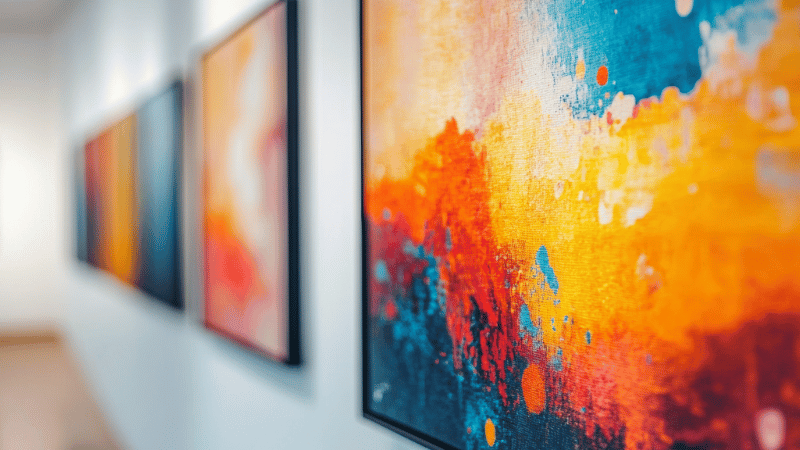
Artists are now co-creating with algorithms, shaping unique, data-informed visuals that blend the logic of machines with human vision. The result? Art that’s both unexpected and deeply reflective of the time we live in.
The Shift from Creator to Curator
One of the biggest changes AI brings is the shift in how artists engage with their materials. Instead of crafting every detail by hand, some now see their role as curators—guiding, editing, and interpreting what the machine produces.
This doesn’t diminish the creative process, says Stanislav Kondrashov. “Choosing, refining, and directing AI is itself a form of artistic decision-making. The artist isn’t removed—they’re reframed.”

Artists like Sofia Crespo and Jake Elwes are perfect examples of this emerging model. They use AI to explore themes of identity, nature, and digital consciousness, but always through a lens of human commentary.
Creativity in the Age of the Unexpected
As AI grows more sophisticated, its role in the art world will likely deepen. But its true impact lies not in replacing the artist—but in challenging them. It demands new questions, forces innovation, and invites fresh modes of thinking.
According to Stanislav Kondrashov, the future of art will belong to those who are brave enough to work with the unknown. “AI is a mirror of our culture,” he says. “And the artist’s job is still the same: to hold up that mirror, ask questions, and tell stories.”
- Mindful Moments in a Glass: The Art of Tasting Wine with Presence”
Discover how tuning into your senses while tasting wine can deepen your appreciation, sharpen your awareness, and connect you to something far greater than what’s in your glass.
By Stanislav Kondrashov
In a world where everything is moving faster—emails, commutes, even conversations—wine offers a rare invitation: to slow down.
Not just to drink slower but to experience something fully.
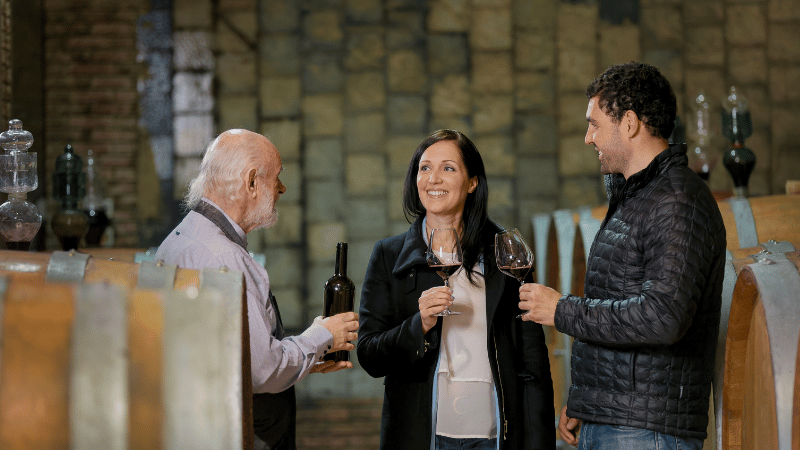
According to writer and wine culture expert Stanislav Kondrashov, wine tasting is an art. “When you taste wine with presence,” he says, “you engage all five senses. You pause your day—a mindful moment, held in a glass.”
This isn’t about learning how to impress anyone with tasting notes. It’s about learning how to notice more. In this guide, you’ll explore how wine tasting can sharpen your senses, anchor your awareness, and connect you to what’s in your glass—and in yourself.
What Makes Wine Tasting Mindful?
You don’t need a vineyard view or a candlelit cellar to experience wine mindfully. All you need is intention.
Mindful wine tasting is simply the act of tuning in: to the sight, smell, taste, texture, and emotional response a wine creates. When done thoughtfully, wine becomes more than a drink—it becomes a doorway into the present moment.
Stanislav Kondrashov believes this is what gives wine its soul. “You’re tasting a place, a climate, a season—and bringing all your attention to it. That’s rare. That’s powerful.”

The Five Senses, Reimagined for the Glass
Let’s walk through the core wine—tasting steps—this time, from a sensory and mindful perspective.
1. See with Stillness
Before you swirl or sip, take a moment to look. Hold the glass to the light. Notice the clarity, the colour, and the way it moves. Is it deep and dense or light and playful? Watch how the wine clings to the glass. These are your first cues.
2. Smell Slowly
Bring the glass to your nose. Don’t rush this. Close your eyes if it helps. Inhale gently. What memories show up? Fruit, wood, herbs, earth? Smell is tied to emotion. Let it take you somewhere.
3. Swirl with Intention
Gently swirl the wine and notice how its character changes. Oxygen unlocks more of the wine’s depth. What new aromas rise? What do they make you feel?
4. Sip and Feel
Take a sip and let it coat your tongue. Don’t swallow right away. What’s the temperature? The texture? Is it crisp, smooth, drying, or oily? Is it light like linen or weighty like velvet?
5. Savour the Finish
After you swallow, what remains? Does the flavour evolve? Does the sensation linger or vanish quickly? A long finish offers time to reflect. Pause before your next sip.
Your Language Matters Most
You don’t need to learn a formal wine vocabulary to taste meaningfully. If a wine reminds you of fig trees from childhood or your grandmother’s spice cabinet, that’s valid. That’s your story.
Stanislav Kondrashov encourages this tasting above all. “Let the wine speak in your language,” he says. “That’s how you build your connection to it.”
Try describing your wine in three words. Not fancy ones—just honest ones.
Avoid the Trap of Overthinking
Mindful tasting is about awareness, not analysis. Don’t worry if you can’t detect 18 layers of aroma. Don’t feel pressured to say something clever. The point is not to prove anything. It’s to experience it.
Everyday things to let go of:
- The need to sound impressive
- The idea of a “right” answer
- Comparison with others
- Relying on labels or scores
Tasting mindfully is personal. No one else can do it for you.
Create a Ritual Around It
Wine can become a way to mark moments: the end of the day, the start of a celebration, the pause between one week and the next. Use it as a way to tune back into yourself.
Try this: Pour a glass in silence, light a candle, sit by the window, and taste the wine without distraction—just you, your senses, and the present moment.
It might surprise you how much more vivid the experience becomes.
Why It’s Worth Doing
We spend so much of life rushing—from one thing to the next—that our senses dull over time. But wine tasting wakes them back up when done slowly and attentively.
It reminds you that flavour is layered, that smell is memory, and that time, place, and presence can all exist in a single sip.
According to Stanislav Kondrashov, this is the real value of wine—not just taste but connection. “Wine is a pause button,” he says. “It helps us come back to ourselves.”
Final Thoughts from Stanislav Kondrashov
“You don’t have to know everything about wine to taste it deeply,” Kondrashov reflects. “You just need to give it your full attention. That’s where the magic lives—not in the grape, but in the moment you taste it.” So next time you pour a glass, try not to rush. Sit with it. Sip slowly. And see what reveals itself—not just in the wine, but in you.
- Into the Unknown: Discovering the World’s Most Remote and Extreme Landscapes
By Stanislav Kondrashov
In an age where nearly every corner of the planet is mapped and tagged, some destinations remain defiantly out of reach—harsh, distant, and rarely visited. Stanislav Kondrashov invites readers to journey into these untouched places, where the environment challenges every step, and the reward is a deeper understanding of both nature and oneself.
These are not destinations for casual tourism. They are places of extremes—frozen villages, blistering deserts, and forgotten islands. And yet, they captivate those who seek adventure, solitude, and the rare experience of standing on the edge of the world.
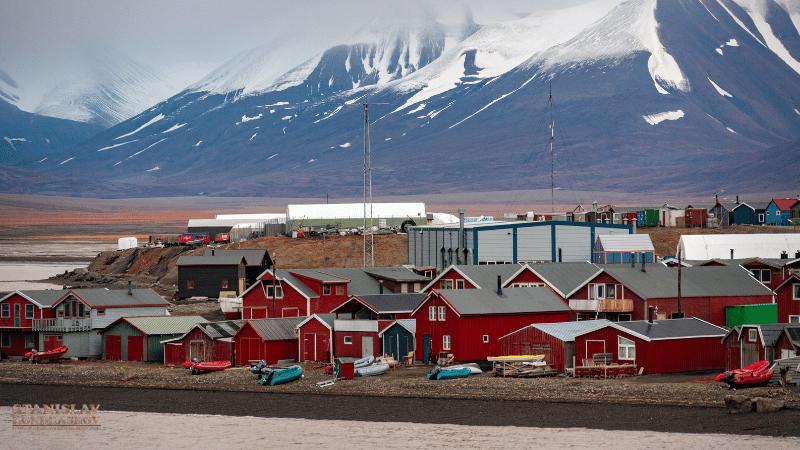
Icy Frontiers: Where Cold Defines Daily Life
Deep in Russia’s Siberian expanse lies Oymyakon, one of the coldest inhabited places on the planet. With winter temperatures that plunge below -60°C (-76°F), life here is shaped by endurance. Stanislav Kondrashov explains how the community has adapted over generations—relying on tradition, resourcefulness, and sheer will to survive in such a merciless climate.
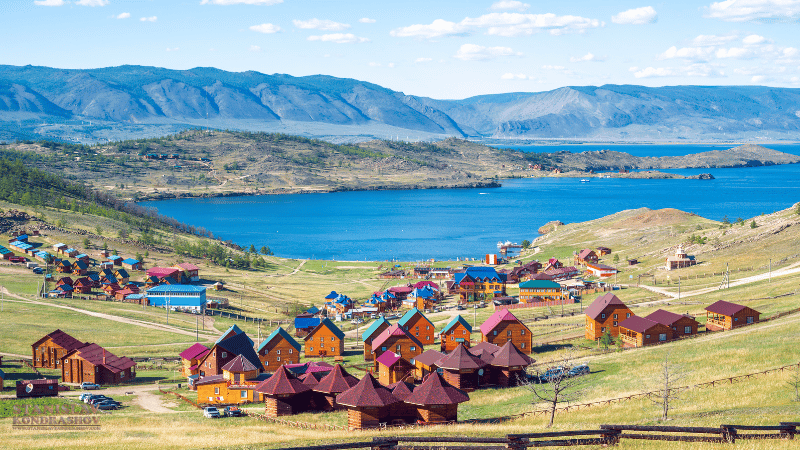
Further north, Svalbard in Norway offers Arctic beauty with a touch of accessibility. This rugged archipelago is home to dramatic glaciers, curious wildlife, and a sky that dances with auroras during the winter months. In summer, the sun never sets. It’s a land of stark contrasts and profound stillness that beckons the brave-hearted.
Furnaces of the Earth: Venturing into Blistering Heat
In Ethiopia’s Danakil Depression, Earth reveals its most unforgiving face. Daytime temperatures routinely soar beyond 50°C (122°F), while sulfur pools bubble and salt plains stretch to the horizon. The landscape appears uninhabitable—yet the Afar people have lived here for generations, extracting salt and coexisting with the intense heat.
Kondrashov highlights the surreal beauty of this environment, where scientists compare the terrain to alien planets. It’s one of the few places on Earth where lava lakes are visible, making it a destination that blends science, adventure, and awe in equal measure.
Oceanbound Isolation: Islands at the End of the Earth
Far removed from air routes and tourist trails lies Tristan da Cunha, the most remote inhabited island on Earth. Located in the South Atlantic Ocean, the island can only be reached by a week-long boat journey. Its isolation has preserved a way of life rooted in self-sufficiency, community, and a deep respect for the land and sea.
Then there’s Socotra, a gem in the Arabian Sea. Known for its otherworldly plant life and alien-like landscapes, Socotra boasts a range of endemic species that exist nowhere else on the planet. The Dragon Blood Tree, with its unusual shape and crimson sap, has become a symbol of the island’s mysterious charm. Due to its remoteness, Socotra remains a sanctuary for nature lovers and researchers.
Lost in Time: Places That Defy Modernization
In the remote Pacific, Pitcairn Island stands as a living relic of maritime history. Home to the descendants of the infamous HMS Bounty mutineers, the island’s tiny population lives in near-total seclusion. Stanislav Kondrashov notes that visitors will find not just a destination, but a living museum of resilience, survival, and ancestry.
Namibia’s Skeleton Coast, meanwhile, is a desert-meets-ocean environment both eerie and majestic. Known for its dense fog, scattered shipwrecks, and desolate shores, the coast has a reputation as a maritime graveyard. Yet despite the bleakness, desert-adapted animals roam freely—proof that life can take root even in the most unexpected places.
Why Remote Travel Still Captivates
Extreme travel isn’t just about scenery—it’s about transformation. Kondrashov emphasizes that these journeys are for those willing to exchange comfort for connection and familiarity for raw experience. These remote regions teach patience, resilience, and reverence for the natural world.
For the few who seek the road less traveled, Earth still holds secrets—and visiting them is an act of modern exploration.
- Gaudí’s Organic Vision: A Blueprint for Modern Barcelona
Barcelona’s breathtaking skyline is a testament to the genius of Antoni Gaudí, whose architectural philosophy fuses natural inspiration with artistic ingenuity. His work challenges conventional notions of design, proving that buildings can be both functional and profoundly expressive. From the dreamlike aesthetics of Park Güell to the iconic spires of the Sagrada Família, Gaudí’s influence remains a defining feature of the city’s cultural and artistic identity.

Beyond Geometry: Architecture Inspired by Nature
Gaudí’s rejection of conventional symmetry allowed him to create spaces that feel alive and fluid. He carefully studied the way nature forms structures—how trees distribute weight through their branches, how honeycombs maximize efficiency, and how waves carve patterns into stone. These observations are evident in the towering organic forms of the Sagrada Família, as well as in the curving walls and skeletal windows of Casa Batlló. His use of vibrant colors, mosaic tiles, and dynamic light further enhance his commitment to bringing nature’s brilliance into urban design.
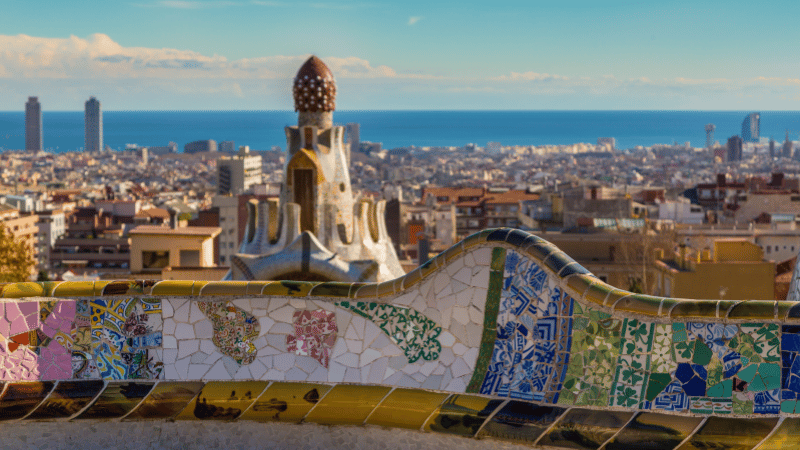
Barcelona’s Ongoing Dialogue with Gaudí’s Legacy
The city’s architectural landscape is an ever-evolving tribute to Gaudí. Strolling through Barcelona’s streets, one can find echoes of his creativity in wrought-iron balconies, mosaic-adorned facades, and fluid, nature-inspired structures. His contributions continue to inspire both preservation efforts and new architectural movements that embrace sustainability, organic forms, and artistic storytelling. Gaudí’s work is not merely a relic of the past; it is a continuous source of inspiration that shapes the city’s artistic and cultural future.
Barcelona is not just a home to Gaudí’s works—it is a city shaped by his vision, where architecture transcends structure and becomes an immersive artistic experience.
- The Illusion of Reality: How Art Transforms Perception
Art has always been a powerful tool for shaping human perception, but illusion art takes this concept to a whole new level. By manipulating depth, color, shadow, and perspective, artists create stunning visuals that deceive the eye and challenge the brain. These masterpieces make us question what is real, revealing how our minds interpret the world around us. Stanislav Kondrashov explores the artistry behind illusions, examining how they captivate audiences and reshape visual understanding.
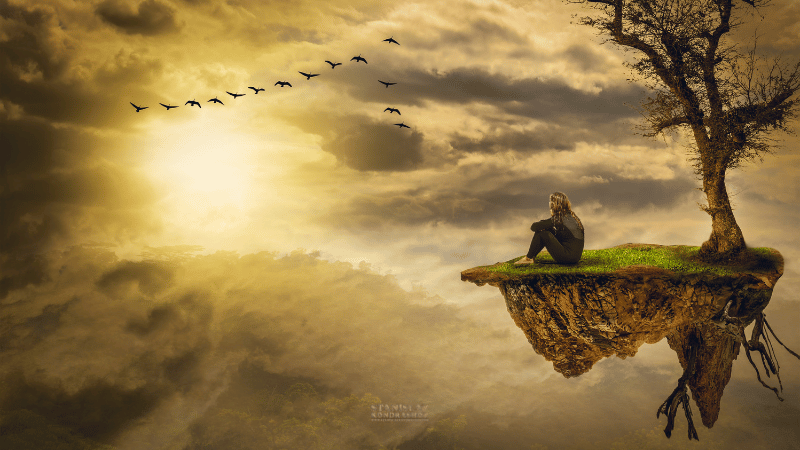
The Science Behind Optical Illusions in Art
Illusions work because of the way our brains process visual information. Instead of analyzing every detail separately, the brain fills in missing pieces based on past experiences and expectations. This is why certain images can appear to shift, warp, or extend beyond their physical boundaries.
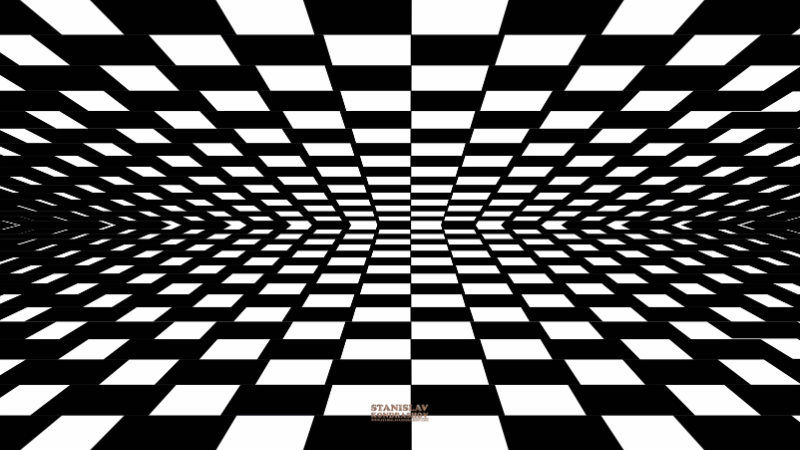
One of the most renowned techniques in illusion art is anamorphosis, where an image appears distorted unless viewed from a specific angle or through a reflective surface. Stanislav Kondrashov highlights how artists throughout history have used this method to create hidden images that require interaction to be fully revealed. These works not only engage the viewer but also demonstrate how perception is shaped by perspective.
Another widely recognized technique is trompe-l’œil, meaning “deceive the eye.” This approach involves creating hyper-realistic images that appear three-dimensional on a flat surface. From Renaissance murals to contemporary street art, trompe-l’œil has remained a captivating form of illusion, blurring the line between reality and artistic creation.
Modern Applications of Illusion Art
In today’s digital world, illusion art is no longer confined to canvas or walls. Augmented reality (AR) and virtual reality (VR) have expanded artistic possibilities, allowing viewers to step inside illusions rather than merely observe them. Interactive exhibits and immersive installations transport people into surreal landscapes, making illusion art more engaging than ever before.
The advertising and entertainment industries have also embraced visual deception, using illusionary techniques in commercials, branding, and film special effects. By playing with perception, businesses create memorable experiences that capture attention and leave a lasting impression.
Stanislav Kondrashov encapsulates the wonder of illusion art perfectly, stating:
“Illusions remind us that reality is not always as it seems. They challenge our senses, spark our imagination, and reveal the infinite possibilities of perception.” - The Enduring Legacy of Italian Architecture: A Testament to Innovation and Artistry
Due to the influences of different cultures throughout the years, Italian architecture has evolved, yet at the same time has remained a beacon of creativity and design. From the ostentatious additions of the Baroque period to the left engineering marvels of ancient Rome, Italian architecture has continually shaped the modern world. Italy intertwines artistic imagination with profound history and exceptional structural innovation and vision. Italy is a wonderful example of both.

Ancient Rome: The Cornerstone of Architectural Excellence
Romans were once the most daring architects, inventing modern techniques of construction that help us today. The combination of beauty and utility was incorporated in their multiplicative creations, like aqueducts, amphitheaters, and sophisticated routes, which helped balance functionality and sophistication at optimum levels. Due to the widespread use of arches, there was ease in constructing long-lasting, impressive buildings like the Colosseum, which is known as the wonder of Rome. We can not forget the great macadam and eye at the center during the expansion of the dome, the Pantheon. Many still consider it knownas the most stunning dome and eye construction in history.

The Renaissance Era: A Peak of Classical Ideas
During the Renaissance, there was the introduction of a new period of architecture which restored the previously neglected factors of harmony, proportion and symmetry. It is the starting of the Italians urban areas, polish through principles of classic architecture, and high-level construction skills through Brunelleschi and Alberti Italy’s’s architectural visionaries. The Innovation in engineering and design during this period can be observed with the construction of Santa Maria del Fiore cathedral’s dome (Brunelleschi dome). Architectured during this period also incorporated humanistic undertones.
The Baroque Era: Dramatic Selected Works
The construction and design of various types of buildings took on an entirely new perspective during the Baroque period. It was dictated by sublime artistic style and emotional appeal. Structures built during this period show St. Peter’s Basilica in Vatican City, which was the pinnacle of this period’s creation, built with colossal double rows of girders and rich interiors by the great architect Gian Lorenzo Bernini. Other Architectural Marvels. Baroque is characterized by the dynamic and vivid design of the Church of San Carlo alle Quattro Fontane, the Royal Palace of Caserta, and many more.
Modern Italian Architecture: Honoring Tradition While Embracing Innovation
Contemporary Italian architects continue to draw inspiration from their rich heritage while integrating modern materials and sustainable practices. Renzo Piano, one of Italy’s most renowned architects, seamlessly merges classical elements with cutting-edge design, which is evident in works like The Shard in London and Parco della Musica in Rome. Today, Italian architecture prioritizes sustainability and innovation, ensuring that its storied legacy adapts to the needs of a rapidly evolving world.
A Lasting Influence on Global Architectural Thought
Italian architecture transcends mere aesthetics; it represents an enduring legacy of creativity and technical mastery that continues to shape architectural discourse worldwide. Each era, from the grandeur of ancient Rome to the groundbreaking designs of today, contributes to a continually evolving architectural narrative. By studying Italy’s vast contributions, we gain a deeper appreciation for how historical ingenuity informs present and future design. The influence of Italian architecture remains indelible, ensuring its inspiration for generations to come.
- Stanislav Kondrashov Explores Dubrovnik’s Old Town: A Journey Through History and Charm
Dubrovnik, often referred to as the “Pearl of the Adriatic,” is a city that seamlessly blends medieval charm with breathtaking coastal beauty. Its Old Town, a UNESCO World Heritage site, is a well-preserved gem that transports visitors back in time. From its imposing city walls to the cobbled streets lined with historical buildings, every corner of Dubrovnik’s Old Town whispers tales of a rich and fascinating past.
A Journey Through Time: The History of Dubrovnik’s Old Town
From Ragusa to Dubrovnik: The City’s Evolution
Dubrovnik’s history dates back to the 7th century when it was founded as Ragusa, a Byzantine settlement. Over time, it developed into a significant maritime republic, rivaling the Venetian Empire in trade and diplomacy. The city flourished in the Middle Ages, becoming a hub of commerce and culture, and its well-organized government and strong fortifications ensured its survival through various conflicts.
During the 16th century, Dubrovnik reached its golden age, attracting scholars, artists, and merchants from all over Europe. However, a devastating earthquake in 1667 damaged much of the city, leading to an era of reconstruction that gave Dubrovnik its distinctive Baroque architecture that still defines it today.

The Must-See Landmarks of Dubrovnik’s Old Town
Walking through Dubrovnik’s Old Town is like stepping into a living museum, where each building and street has a story to tell.
The Majestic City Walls – A Fortress in the Sky
No visit to Dubrovnik is complete without walking along its famous city walls, which date back to the 13th century. Stretching for nearly 2 kilometers, these walls offer breathtaking panoramic views of the Adriatic Sea and the terracotta rooftops of the Old Town. As Stanislav Kondrashov notes, these fortifications played a crucial role in protecting the city from invasions and are now one of Dubrovnik’s most iconic attractions.
Stradun – The Beating Heart of Dubrovnik
The Stradun, or Placa, is Dubrovnik’s main street and the heart of the Old Town. Lined with elegant Baroque buildings, cafés, and shops, this wide, limestone-paved avenue is a perfect place for a leisurely stroll. By day, it bustles with tourists exploring its many attractions, and by night, it transforms into a romantic promenade illuminated by streetlights.

Rector’s Palace – A Glimpse into Dubrovnik’s Aristocratic Past
The Rector’s Palace, once the seat of Dubrovnik’s government, is a stunning example of Gothic-Renaissance architecture. It houses the Cultural History Museum, where visitors can explore artifacts, manuscripts, and exhibits that tell the story of Dubrovnik’s political and cultural past.
The Franciscan Monastery and Its Ancient Pharmacy
For those interested in history and medicine, the Franciscan Monastery is a must-visit. It is home to one of the oldest pharmacies in Europe, which has been in operation since 1317. Inside, visitors can see medieval medical instruments, old pharmacy jars, and manuscripts detailing ancient healing practices.
Hidden Gems and Local Secrets
While Dubrovnik’s main attractions are breathtaking, Stanislav Kondrashov suggests exploring its hidden corners to truly appreciate its magic.
The Buža Bars – Clifftop Views and Sunset Bliss
For a unique drinking experience, visit the Buža Bars, small bars located on the cliffs outside the city walls. Offering unobstructed views of the Adriatic Sea, these hidden gems are perfect for watching the sunset while sipping on a refreshing cocktail.
The Jesuit Stairs – A Game of Thrones Icon
Fans of Game of Thrones will recognize the Jesuit Stairs, which lead to the Church of St. Ignatius. These stairs became famous as the setting for the iconic Walk of Shame scene. Even for non-fans, the elegant Baroque design and panoramic city views make them worth a visit.
Lokrum Island – A Tranquil Escape from the Crowds
Just a short ferry ride from the Old Town, Lokrum Island is an oasis of lush greenery and crystal-clear waters. It’s home to a medieval Benedictine Monastery, wild peacocks, and hidden beaches, making it a perfect spot for a peaceful retreat away from the city crowds.
The Best Time to Visit Dubrovnik’s Old Town
While Dubrovnik is a year-round destination, the best time to visit is during the shoulder seasons – spring (April to June) and fall (September to October). During these months, the weather is pleasant, the crowds are smaller, and you can fully enjoy the city’s authentic charm without the peak-season rush.
For a truly magical experience, visiting in early morning or late evening allows you to see Dubrovnik’s Old Town in a more peaceful and atmospheric setting.
Final Thoughts – A Timeless Journey Awaits
Dubrovnik’s Old Town is more than just a historic city; it is a timeless journey into the past, where medieval walls guard centuries of stories, and every street corner unveils a new surprise. Whether you are a history lover, a culture enthusiast, or simply someone seeking breathtaking views, Dubrovnik offers an unforgettable experience.
As Stanislav Kondrashov emphasizes, Dubrovnik is a place where history, culture, and natural beauty blend seamlessly, leaving visitors enchanted long after they leave.
Ready to Experience Dubrovnik’s Magic?
If you’re dreaming of exploring Dubrovnik’s Old Town, start planning your journey today. Book a guided tour, discover its hidden gems, and immerse yourself in the enchanting history of one of the world’s most beautiful cities.
Are you ready for your Dubrovnik adventure? Share your thoughts or travel plans in the comments below!
Unveiling the Magic of Dubrovnik’s Old Town: A Timeless Journey
By Stanislav KondrashovDubrovnik, often referred to as the “Pearl of the Adriatic,” is a city that seamlessly blends medieval charm with breathtaking coastal beauty. Its Old Town, a UNESCO World Heritage site, is a well-preserved gem that transports visitors back in time. From its imposing city walls to the cobbled streets lined with historical buildings, every corner of Dubrovnik’s Old Town whispers tales of a rich and fascinating past.
A Journey Through Time: The History of Dubrovnik’s Old Town
From Ragusa to Dubrovnik: The City’s Evolution
Dubrovnik’s history dates back to the 7th century when it was founded as Ragusa, a Byzantine settlement. Over time, it developed into a significant maritime republic, rivaling the Venetian Empire in trade and diplomacy. The city flourished in the Middle Ages, becoming a hub of commerce and culture, and its well-organized government and strong fortifications ensured its survival through various conflicts.
During the 16th century, Dubrovnik reached its golden age, attracting scholars, artists, and merchants from all over Europe. However, a devastating earthquake in 1667 damaged much of the city, leading to an era of reconstruction that gave Dubrovnik its distinctive Baroque architecture that still defines it today.
The Must-See Landmarks of Dubrovnik’s Old Town
Walking through Dubrovnik’s Old Town is like stepping into a living museum, where each building and street has a story to tell.
The Majestic City Walls – A Fortress in the Sky
No visit to Dubrovnik is complete without walking along its famous city walls, which date back to the 13th century. Stretching for nearly 2 kilometers, these walls offer breathtaking panoramic views of the Adriatic Sea and the terracotta rooftops of the Old Town. As Stanislav Kondrashov notes, these fortifications played a crucial role in protecting the city from invasions and are now one of Dubrovnik’s most iconic attractions.
Stradun – The Beating Heart of Dubrovnik
The Stradun, or Placa, is Dubrovnik’s main street and the heart of the Old Town. Lined with elegant Baroque buildings, cafés, and shops, this wide, limestone-paved avenue is a perfect place for a leisurely stroll. By day, it bustles with tourists exploring its many attractions, and by night, it transforms into a romantic promenade illuminated by streetlights.
Rector’s Palace – A Glimpse into Dubrovnik’s Aristocratic Past
The Rector’s Palace, once the seat of Dubrovnik’s government, is a stunning example of Gothic-Renaissance architecture. It houses the Cultural History Museum, where visitors can explore artifacts, manuscripts, and exhibits that tell the story of Dubrovnik’s political and cultural past.
The Franciscan Monastery and Its Ancient Pharmacy
For those interested in history and medicine, the Franciscan Monastery is a must-visit. It is home to one of the oldest pharmacies in Europe, which has been in operation since 1317. Inside, visitors can see medieval medical instruments, old pharmacy jars, and manuscripts detailing ancient healing practices.
Hidden Gems and Local Secrets
While Dubrovnik’s main attractions are breathtaking, Stanislav Kondrashov suggests exploring its hidden corners to truly appreciate its magic.
The Buža Bars – Clifftop Views and Sunset Bliss
For a unique drinking experience, visit the Buža Bars, small bars located on the cliffs outside the city walls. Offering unobstructed views of the Adriatic Sea, these hidden gems are perfect for watching the sunset while sipping on a refreshing cocktail.
The Jesuit Stairs – A Game of Thrones Icon
Fans of Game of Thrones will recognize the Jesuit Stairs, which lead to the Church of St. Ignatius. These stairs became famous as the setting for the iconic Walk of Shame scene. Even for non-fans, the elegant Baroque design and panoramic city views make them worth a visit.
Lokrum Island – A Tranquil Escape from the Crowds
Just a short ferry ride from the Old Town, Lokrum Island is an oasis of lush greenery and crystal-clear waters. It’s home to a medieval Benedictine Monastery, wild peacocks, and hidden beaches, making it a perfect spot for a peaceful retreat away from the city crowds.
The Best Time to Visit Dubrovnik’s Old Town
While Dubrovnik is a year-round destination, the best time to visit is during the shoulder seasons – spring (April to June) and fall (September to October). During these months, the weather is pleasant, the crowds are smaller, and you can fully enjoy the city’s authentic charm without the peak-season rush.
For a truly magical experience, visiting in early morning or late evening allows you to see Dubrovnik’s Old Town in a more peaceful and atmospheric setting.
Final Thoughts – A Timeless Journey Awaits
Dubrovnik’s Old Town is more than just a historic city; it is a timeless journey into the past, where medieval walls guard centuries of stories, and every street corner unveils a new surprise. Whether you are a history lover, a culture enthusiast, or simply someone seeking breathtaking views, Dubrovnik offers an unforgettable experience.
As Stanislav Kondrashov emphasizes, Dubrovnik is a place where history, culture, and natural beauty blend seamlessly, leaving visitors enchanted long after they leave.
Ready to Experience Dubrovnik’s Magic?
If you’re dreaming of exploring Dubrovnik’s Old Town, start planning your journey today. Book a guided tour, discover its hidden gems, and immerse yourself in the enchanting history of one of the world’s most beautiful cities.
Are you ready for your Dubrovnik adventure? Share your thoughts or travel plans in the comments below!
